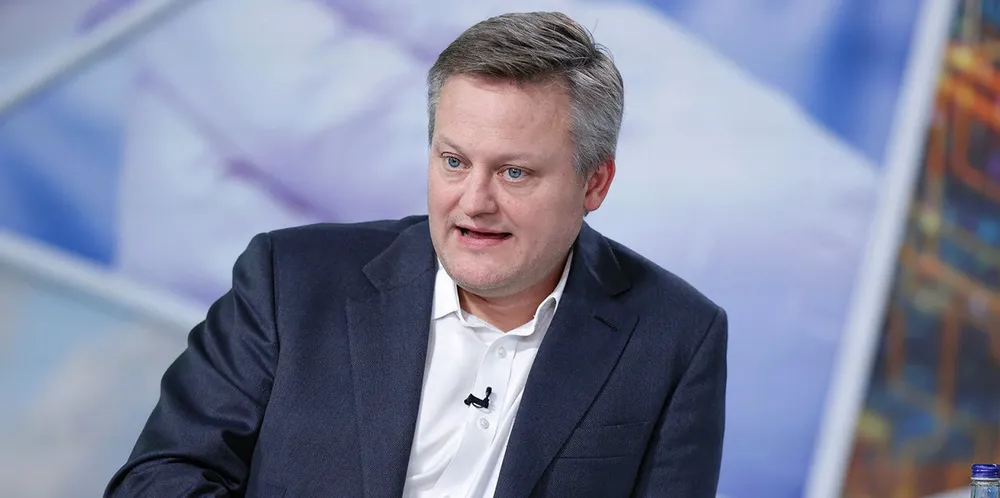BP's CEO explains Equinor US offshore wind split: 'It was time to divorce ourselves'
Auchincloss says differing visions of business model at heart of parting of ways

BP’s mutually-agreed decision to end its US East Coast joint venture with Norwegian peer Equinor was motivated by different visions about business models for offshore wind, the UK company's newly confirmed CEO said today (Tuesday).
In his first encounter with analysts since taking over as CEO, Murray Auchincloss faced a question about the decision to end the joint venture in which BP and Equinor had equal stakes in the Empire 1&2 and Beacon 1&2 projects off New York.
Equinor, which took full control of the Empire projects, has already said that it will rebid for new terms, but BP has not yet given a clear signal of intent for the 2.5GW Beacon projects.
Auchincloss, who was presenting his first quarterly results since taking over as CEO on a permanent basis last month, said the split highlighted BP’s own shift in focus.
“Over time, what we've decided is that integrated delivery models are much more important for us than a PPA [power purchase agreement]-like model. Empire really is a PPA model, so it was time to divorce ourselves and let Equinor carry forward if they want to do that," he stated.
Auchincloss said the Beacon projects looked like a good candidate for the kind of integration that BP envisages.
“We're number one gas trader in the United States, and number two or three in power. We see capacity to absorb these and create some interesting value [with Beacon]. We'll take our time to do this, we're not in any rush, because the US really needs to build out and, of course, we'll bring in partners over time,” he stated.
Quizzed further about offshore wind, Auchincloss added: “As we've said before, our returns hurdles on offshore wind are 6% to 8% unlevered, but by the time you lever it up, by the time you farm it down, bringing in a partner… by the time you've integrated into our business, you're well into double digit returns."
"And that competes well with the rest of our businesses. So we're happy with our strategy."
Strategy scrutiny
The comments came at a time when BP’s own energy transition strategy is under close scrutiny
Auchincloss said he will stick to the strategy forged by his predecessor Bernard Looney, describing it as a transition from international oil company to integrated energy company .
"The direction of travel is unchanged, but you'll see it much more focused, much simpler and very, very returns focused," he told analysts, promising a "higher value company."
This transformation includes a commitment to reduce fossil fuel production and investing in green technologies, but the speed and depth of these cuts had already been softened under Looney.
BP presentations about low carbon business now place more emphasis on biofuels, sustainable aviation fuel and lowering carbon footprints with lower carbon production, and a more cautious approach to hydrogen and electricity for power.
Auchincloss said the company was promising higher margins with lower emisions while accelerating efforts to build a third value chain of lower carbon power and hydrogen, backed by the company's trading organisation. "The more we interlink these the more we can expand returns," he said.
More oil?
While BP's projected decline in oil production to 20230 is now 25%, rather than 40% as previously, the company has signalled that output may actually increase by 2%-3% through 2027.
Such moves are likely to please Bluebell Capital Partners, an activist investor that wrote to Auchincloss and BP chair Helge Lund in October calling on the board to ditch the commitment to cut oil and gas output outright.
Auchincloss said the possible uptick depended on final investment decisions on a number of big projects in Brazil, the US Gulf of Mexico, Canada, Abu Dhabi and elsewhere.
"Let's see how we go on those. And if if we decide to sanction more than rather than less than I think we can do better than that 2-3%. But I'm not going to be focused on volume, I'm going to be super focused on returns," he stated.
BP’s net debt fell to $20.9bn at the end of 2024, the lowest level in a decade, and the company is not short of capital.
The company announced another $1.75bn in share buybacks today and has promised to buy back at least $14bn over 2024 and 2025.
The apparent shift away from commitments and high levels of distribution to shareholders has drawn the fire of campaign groups and activists on the other side of the fence.